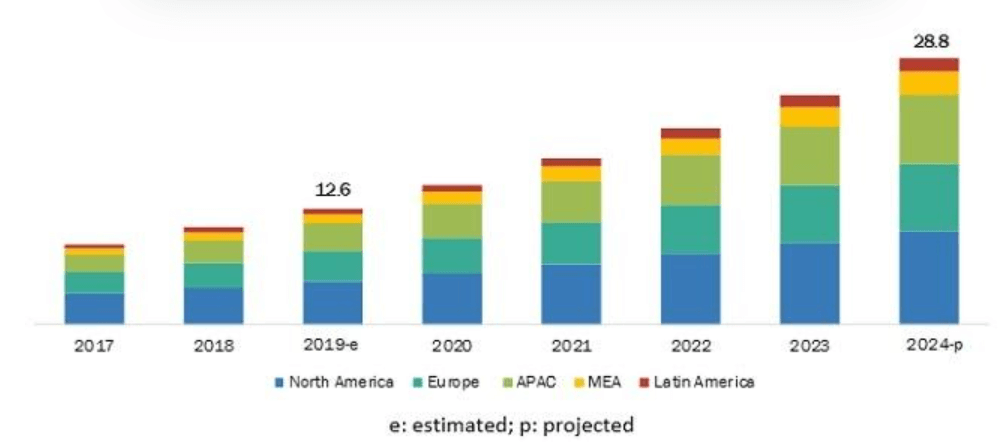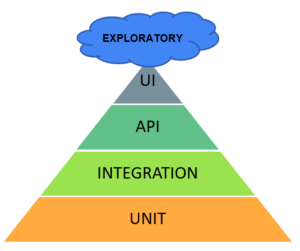Accelerate Success with AI-Powered Test Automation – Smarter, Faster, Flawless
Start free trialIt’s the golden era of Test Automation! You cannot talk about the latest practices like DevOps, Continuous Delivery and Continuous Testing without the term Automation. With the power of automation, Testing has taken a ‘moonshot’, transforming the way the world looks at Testing.
In a traditional software development environment, testing would get completed at the end of the development cycle. Also, manual testing is time-consuming and prone to errors. Organizations are now translating their manual test cases to automated testing to achieve Quality-at-Speed, lower the risk factor and improve the test coverage.
Agile and DevOps have changed the way the code is developed, tested and deployed. Development and QA teams are under tremendous pressure to have a working version of the software within each sprint. The software is always in development and must be deployment-ready at all instances making testing mandatory at every stage of the delivery pipeline. And Continuous Testing and Test Automation are the keys to its success.
According to the World Quality Report, there is an increase in the adoption of Agile and DevOps. With the growing risk and complexity of software development, teams are on the hook to keep quality high. This has resulted in QA teams becoming orchestrators of quality.
So What Exactly is Test Automation?
Test Automation is a method in software testing that leverages automation tools to control the execution of tests. Test automation is also called automated testing or automated QA testing.
According to the MarketsAndMarkets report, “the global test automation market size is anticipated to rise from USD 12.6 Billion in 2019 to USD 28.8 Billion by 2024 at a CAGR (Compound Annual Growth Rate) of 18.0 per cent during the prediction period”.

Types of Automation Tests
Let us look at the types of tests that can be automated and how they help test every aspect of the system enabling users to achieve a frictionless experience.
- Unit Tests: How well does your single unit of code work independently?
- Integration and API Tests: How well does your system work when all units are integrated? Does it make or break the system? How well does your system work with external systems?
- Regression Tests: How well does your system work when you add a new feature to your existing one? Has your software “regressed” after the new update?
Every time you add a new feature or functionality, you need to check if there is any impact on the existing features
- Performance Tests: How well do your software handle load and stress? How well is the responsiveness and stability of your software?
- Smoke Tests: How well is your software’s stability? How well are your software’s functionalities working? Are there any showstoppers?
- Security Tests: How well is your software secure from any vulnerabilities?
Criteria to Choose Which Tests to Automate?
The more automation you do, the more time you save. But this doesn’t mean you can automate everything! So, how do you choose the type of test cases that can be automated?
To get the maximum Return on Investment (ROI), automate the test cases that fall under the following criteria:
- High Volume and Repetitive tests that need to be run for every build like the smoke test, regression tests
- Business-Critical Tests
- Tests that need to run over multiple configurations/browsers/devices/OS/environment/hardware
- Non-functional tests like performance, stress and load tests
- Time-consuming manual tests

Implementing a Test Automation Strategy
Quality, Agility and Continuous delivery go hand-in-hand in the software development cycle.
The Test Automation Strategy defines a framework for automated test scripts. It calls for automating tests at different levels.
Unit and Integration testing represents the base and majority of this test automation pyramid. Next comes, service layer, or API testing where the API tests are executed against the service layer.
And finally at the top of the pyramid are the GUI tests that validate the application as a whole at the presentation layer. Top it up with exploratory testing that identifies potential edge cases. Unlike scripted testing, exploratory testing uncovers unique and out-of-scope defects that would have otherwise been missed.

- Defining the automation scope
Defining the scope can be tricky for many teams due to the magnitude of the project’s features and functionalities. Answering these 2 questions can help the team to formulate a better scope and provide the stakeholders a bird’s eye view of the scope.
- Which are the features that need testing?
This defines the area of the application which will be automated. - What is the testing approach for each of the selected features?
Defining the scope will help keep all the teams on the same page.
- Selecting the Right Test Automation Tool
A tool may be the best in the market, but is it right for you?
A right tool can help you reinvigorate and accelerate the success of your automation journey. There are a plethora of tools available in the market to choose from based on your project requirement and scope of automation.
Consider the following parameters while choosing the best tool based on your requirement:
- Availability of extensive test reports and analytics
- Learning curve/Ease of use with a user-friendly interface
- Ease of test creation and maintenance
- Support
- Planning, Designing and Developing
To plan an automation test strategy, you need to consider your goals for the testing process and the timelines for executing the test cases. Accordingly, you need to:
a. Develop the test scope
b. Develop the test cases
c. Develop the test suites
- Execution and Reporting
To execute the automated testing scripts, you need to be ready with the input data. Reports would be generated based on the test execution results.
Benefits of Automation Testing
Testing has to be repeated every time there is a change. Automating the tests can reap multiple business benefits like:
- Higher Test Coverage – Increases the depth and scope of the tests
- Reusability of Test Suite – Once a test suite is defined, it can be easily replicated for various other use cases.
- Real time analysis – Instant reporting helps to reduce the feedback loop between developers and testers
- Eliminates human error – Manual testing is prone to errors. Automated tests can execute the steps precisely and repeatedly leaving no room for any human error, especially for complex scenarios.
- Faster feedback cycle – The defects are identified at an early stage giving ample time for the developers to fix the defects and ensure faster validation.
- Faster time to market – With early defect identification and resolution, the time-to-market rapidly speeds up.
- Increase team morale. As the mundane, repetitive and manual tasks get eliminated, teams can divert and invest more time in other priority and productive activities.
Conclusion
Continuous Testing is a must for continuous delivery, and it requires test automation throughout the delivery pipeline. With recent advancements, automation clubbed with AI/ML helps in accelerating the speed of deployment and reducing the common risks and pitfalls that come with continuous delivery.
The advantages of test automation are limitless. All in all, test automation is necessary to speed up the development and deployment of software releases. It not only helps organizations to save time, but also helps in delivering high quality products.
To maximize the benefits of automated testing, Webomates CQ believes that following a formal quality assurance process is imperative for a successful release. Along with shifting left the testing process, our QA team embeds intelligent automation and continuous testing principles right across the software delivery pipeline. With a perfect blend of Agile, DevOps, patented AI Defect Predictor tool and a test automation framework, Webomates can help you achieve a hassle-free release, every time!
Tags: Continous Testing, Non functional testing, Test Automation

Leave a Reply